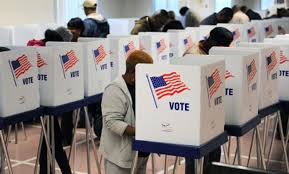How Donald Trump Won: A Wake-Up Call to the Establishment

Picture Courtesy of WFDF-AM (910)
Since the announcement of his candidacy back in the summer of 2015, Trump’s rhetoric has astounded Republicans and Democrats alike. What surprised them even more, however, was that this rhetoric resonated with the Republican base, allowing Trump to win primary after primary and eventually the nomination, even though most pundits and politicians inside the establishment kept denying it could happen every step of the way. In general, even after Trump’s disastrous Hollywood Access scandal, he still was able to rise in the polls, something most politicians would be unable to do. Just one month later, he secured the 45th presidency of the United States of America. Liberals and conservatives alike have been asking themselves, “How could this happen?!” however, if one looks at recent voting trends the outcome was actually quite obvious in hindsight.
Over the last few years anti-establishment resentment has been growing: first from liberals, under the “horrific” policies under George W. Bush and his controversial 2000 win, and later from Republicans and the Tea Party movement, under what they perceived as an overreaching government under Barack Obama. Even under their respective presidents, the blue-collar workers of America think they have been ignored by their Washington representatives. Ever since Reagan, free trade policy has become more and more popular under US politicians on both sides. However, this policy undermines the base of the modern Republican Party and the Democratic Party since 2008. Free trade deals such as NAFTA have “shipped” high paying manufacturing jobs overseas to places like China and Vietnam, where workers can be paid less for their labor. While jobs in the US have opened in the computing and service sectors are opening up, these jobs either aren’t available to your average ex-factory worker, or pay much less. This has cause many blue-collar voters, the main base of the Republican party and much of the Democratic Party, to seek out a non-establishment candidate. This is why Obama won in 2008, Trump won in 2016, and why Bernie Sanders did so well for being a self-described “socialist”.
Many people have offered up the explanation that Trump’s supporters are simply racist or ignorant; I do not think that is the whole truth. While a sizable minority are definitely racist to some extent (I’d guess around 30%, although positions of up to 50% can be supported with data. After all, 58% of Trump supporters think Obama is a Muslim), the majority of his supporters are just people who’ve been downtrodden by the economy and overlook Trump’s more audacious rhetoric because he’s promised to bring back their jobs. If the Democrats want to make a comeback, they need to appeal to these people and focus on the economy, not just social issues. If the main-stream Republicans want to make a comeback, they may have to give up some of their more Libertarian beliefs and support more infrastructure spending or government healthcare to reach out to these people. If either of the parties can achieve this, I am certain they will win the mid-term elections in 2018 and, if Trump doesn’t follow through on his promises (which it looks like he won’t), win back the presidency in 2020.

